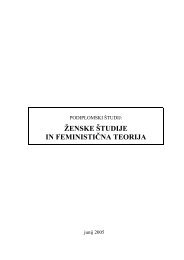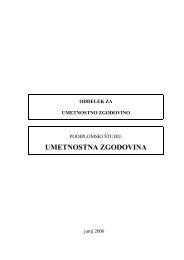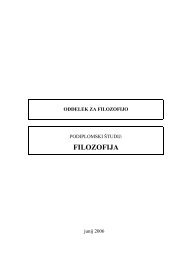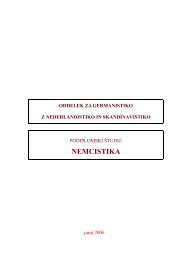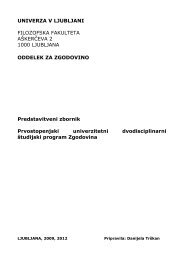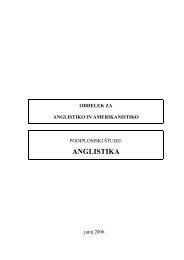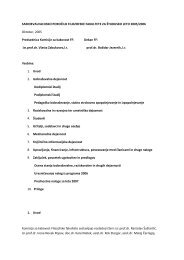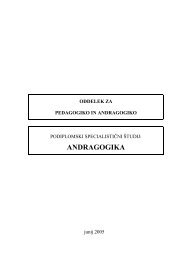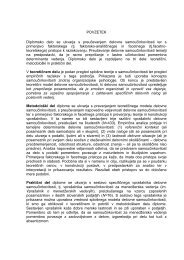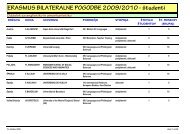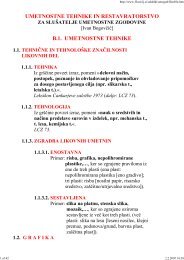LINGUISTICA XLIX - Filozofska fakulteta - Univerza v Ljubljani
LINGUISTICA XLIX - Filozofska fakulteta - Univerza v Ljubljani
LINGUISTICA XLIX - Filozofska fakulteta - Univerza v Ljubljani
Create successful ePaper yourself
Turn your PDF publications into a flip-book with our unique Google optimized e-Paper software.
(17i) The two variants: ergative and antipassive constructions.<br />
1. The assumptions of Natural Syntax:<br />
1.1. >nat (antipassive, ergative) / construction<br />
I.e., the antipassive is more natural than the ergative construction. – The antipassive<br />
often has some features of intransitive constructions, and these are more natural<br />
than transitive constructions, to which ergative constructions invariably pertain.<br />
(The naturalness of intransitive constructions is based on the circumstance that they<br />
code fewer participants than transitive constructions.) According to the criterion of<br />
least effort, item (b) in the list of axioms.<br />
1.2. >nat (–, +) / implementation of Agency hierarchy<br />
I.e., constructions disobeying the Agency hierarchy are more natural than constructions<br />
obeying that hierarchy. – Because the Agency hierarchy constitutes the<br />
usual state of affairs, the implementation of the Agency hierarchy is more expected<br />
by the hearer (the decoder) than the non-implementation of that hierarchy.<br />
According to the criterion of favourable for the hearer, item (a) in the list of axioms.<br />
2. The rules of parallel alignment:<br />
2.1. value A tends to associate with value C,<br />
2.2. value B tends to associate with value D.<br />
3. The consequences:<br />
If a language distinguishes between ergative and antipassive constructions such<br />
that one implements the Agency hierarchy and the other does not implement that<br />
hierarchy, then it is the ergative construction that tends to implement the Agency<br />
hierarchy and it is the antipassive that tends not to implement that hierarchy.<br />
Q.E.D. (The reverse situation is not expected.)<br />
(17ii) The two variants: ergative and antipassive constructions.<br />
1. The assumptions of Natural Syntax:<br />
1.1. >nat (antipassive, ergative) / construction<br />
I.e., the antipassive is more natural than the ergative construction. – The antipassive<br />
often has some features of intransitive constructions, and these are more natural<br />
than transitive constructions, to which ergative constructions invariably pertain. (The<br />
naturalness of intransitive constructions is based on the circumstance that they code<br />
fewer participants than transitive constructions.) According to the criterion of least<br />
effort, item (b) in the list of axioms.<br />
1.2. >nat (+, −) / non-accomplished non-complete environments<br />
I.e., non-accomplished non-complete environments are more natural than<br />
“other” environments. – “Other” environments include accomplished and complete<br />
environments. These are in the special interest of the hearer and therefore must be<br />
mentioned in slot B of the scale. According to the criterion of favourable for the<br />
hearer, item (a) in the list of axioms.<br />
2. The rules of parallel alignment:<br />
2.1. value A tends to associate with value C,<br />
2.2. value B tends to associate with value D.<br />
90



